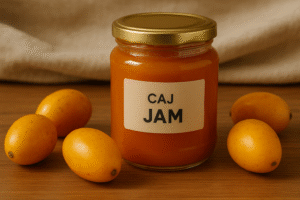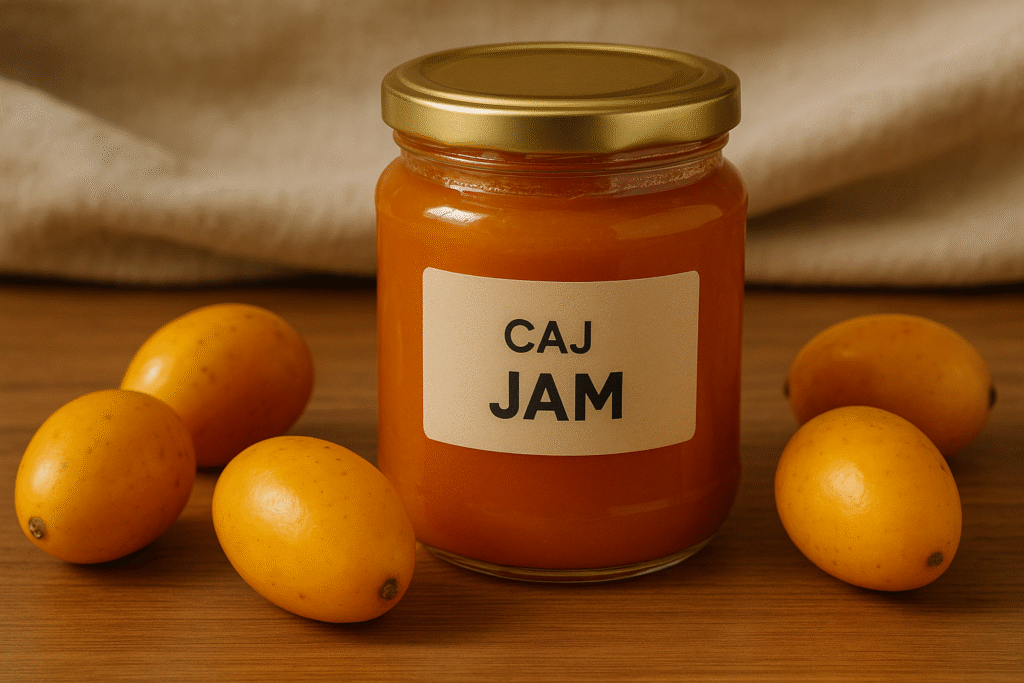The cajá, also known as yellow mombin (Spondias mombin), is a tropical fruit widely consumed in Brazil, especially in the North and Northeast regions. Known for its tangy and refreshing flavor, cajá comes from the cajazeira tree, which can grow up to 20 meters tall and produce clusters of vibrant yellow fruits.
Although small in size, cajá is packed with vitamins, minerals, and antioxidants that make it much more than just a tasty treat. From strengthening immunity to promoting skin health, this exotic fruit has earned its place as a valuable component of a healthy diet. In this article, we’ll explain what cajá is, its nutritional properties, and highlight 7 health benefits that make it worth including in your daily routine.
What Is Cajá?
Cajá is a tropical fruit native to the rainforests of South America and has long been part of Brazilian culinary traditions. The fruit is oval-shaped, bright yellow when ripe, and has a juicy, fibrous pulp with a distinctive balance between acidity and sweetness.
Because of its refreshing taste, cajá is often used to prepare juices, popsicles, jams, and even traditional homemade liqueurs. It is also low in calories, making it an excellent option for those who want to enjoy something delicious without compromising a balanced diet.
Nutritional Profile of Cajá
Cajá is considered a nutrient-dense fruit thanks to its impressive composition:
-
Vitamin C: supports the immune system and boosts collagen production.
-
Fiber: improves digestion and promotes satiety.
-
Iron: prevents and helps treat anemia.
-
Calcium and phosphorus: essential for strong bones and teeth.
-
Antioxidants: protect against free radicals and premature aging.
This combination makes cajá a functional food that supports both prevention and overall health.
7 Health Benefits of Cajá
1. Strengthens the immune system
Thanks to its high concentration of vitamin C, cajá is a natural immunity booster. Regular consumption of cajá juice can help reduce the risk of colds, flu, and infections, keeping the body’s defenses strong year-round.
2. Promotes healthy skin
The antioxidants in cajá fight free radicals, which are responsible for premature aging and skin damage. Vitamin C also stimulates collagen production, helping maintain firm, smooth, and youthful-looking skin.
3. Supports digestion
The dietary fiber found in cajá helps regulate bowel movements, preventing constipation and promoting a healthier digestive system. Additionally, it provides a longer-lasting feeling of fullness, which can help with weight management.
4. Prevents anemia
Cajá contains iron, a key mineral for the production of hemoglobin. This makes the fruit particularly useful in the prevention of iron-deficiency anemia. When consumed with other vitamin C–rich foods, the absorption of iron from cajá becomes even more effective.
5. Strengthens bones and teeth
Rich in calcium and phosphorus, cajá supports bone density and dental health. This benefit is essential for children in their growth stage and older adults who may face bone fragility over time.
6. Fights premature aging
The fruit is loaded with natural antioxidants that protect the body’s cells from oxidative stress. This slows down the aging process, reduces the risk of chronic diseases, and helps keep organs functioning properly.
7. Refreshes and hydrates
With its high water content, cajá is both hydrating and refreshing. On hot summer days, a glass of cajá juice is not only delicious but also helps replenish fluids naturally, making it a healthier alternative to processed beverages.
Ways to Consume Cajá
Cajá is a versatile fruit that can be enjoyed in many ways:
-
Fresh: eaten raw, for those who enjoy its tangy flavor.
-
Juices and smoothies: refreshing and full of nutrients.
-
Frozen pulp: convenient and easy to use.
-
Jams and jellies: perfect for breakfast or snacks.
-
Ice creams and popsicles: a delicious treat in warm weather.
-
Liqueurs: traditional in some Brazilian regions.
Cajá and Sustainability
Beyond its health benefits, cajá also contributes to environmental sustainability. The cajazeira tree plays an important role in tropical ecosystems by providing food and shelter for birds and other animals. Supporting the cultivation and consumption of cajá means also supporting local farmers and preserving native biodiversity.
Conclusion
The cajá (yellow mombin) is more than just a tropical delicacy. It is a nutritional powerhouse that delivers multiple benefits: stronger immunity, better skin health, improved digestion, anemia prevention, stronger bones, anti-aging protection, and natural hydration.
Incorporating cajá into your diet—whether as fresh fruit, juice, or jam—is an easy and flavorful way to boost your well-being while also appreciating a native Brazilian species that enriches local culture and ecology.
So, the next time you see cajá at a market or grocery store, don’t hesitate to try it. Your body—and your taste buds—will thank you.

Boost Your Energy the Smart Way
Experience clean and lasting energy with Obrilo Performance Energy Dye Free Water Enhancer.
With L-Theanine, Taurine, Vitamin Complex, Ginseng and Guarana, it’s designed to improve focus, fight fatigue, and keep you active all day — without artificial dyes.
The perfect choice for workouts, study sessions, or busy days!

Discover More About Tropical Fruits
Learn fascinating facts and health benefits of unique Brazilian fruits.
Check out our complete guide on the umbu fruit and see why it’s considered one of the treasures of the caatinga.

